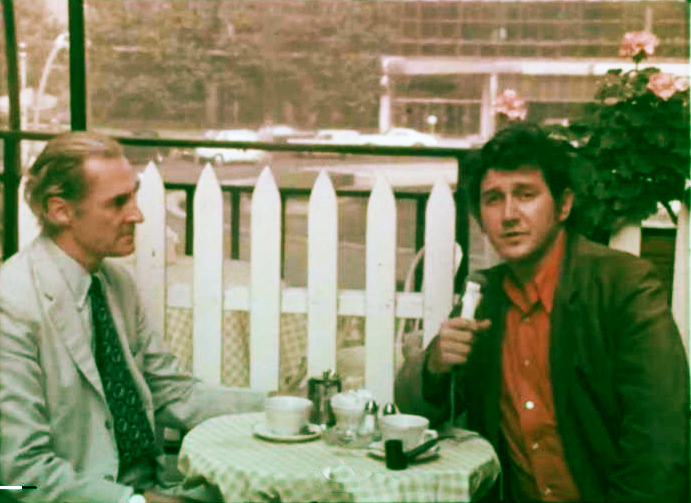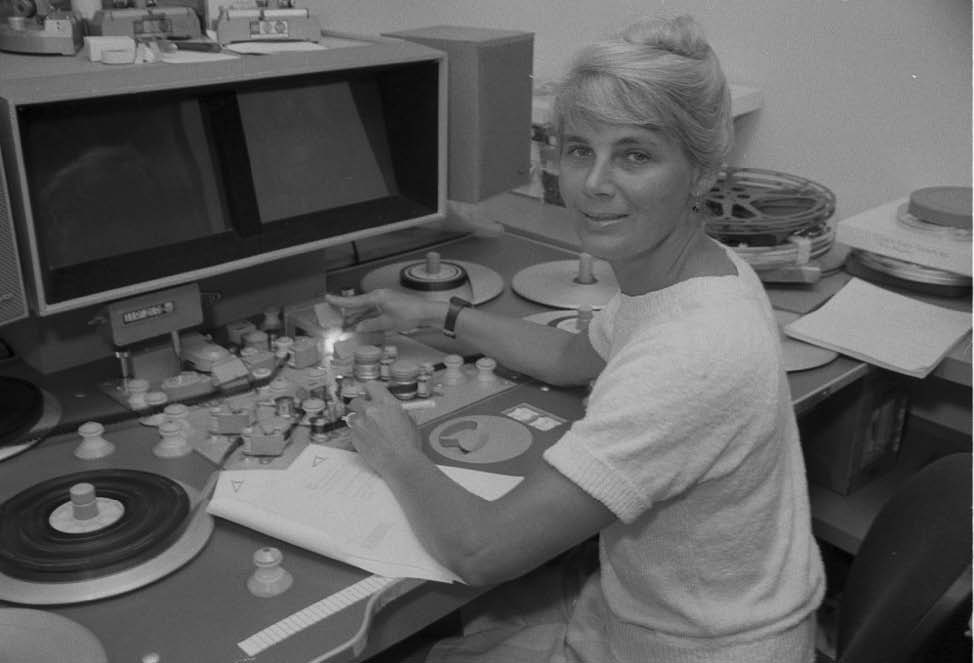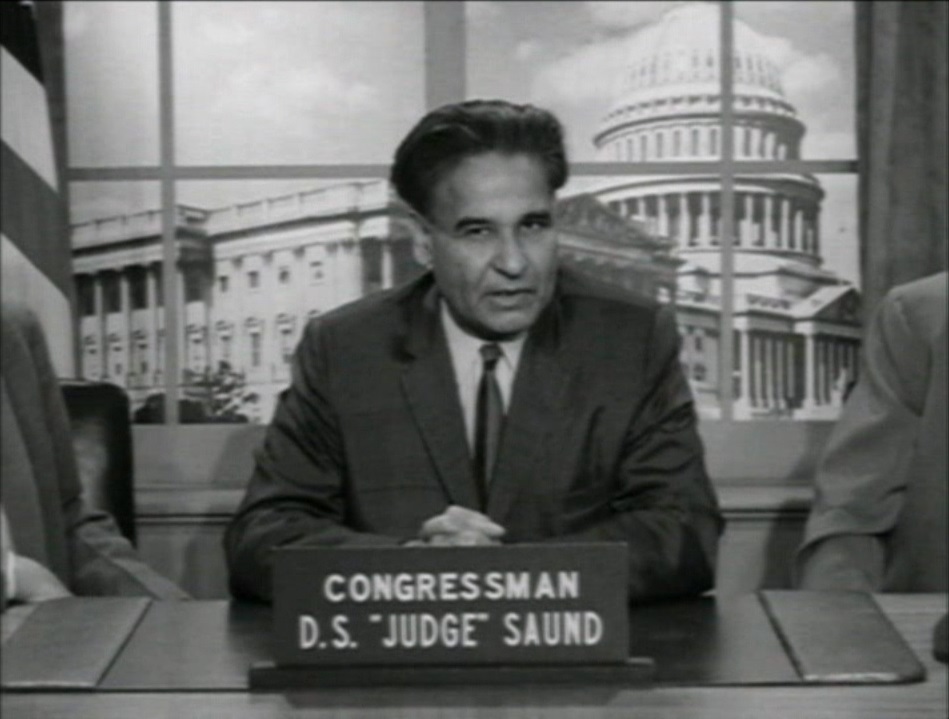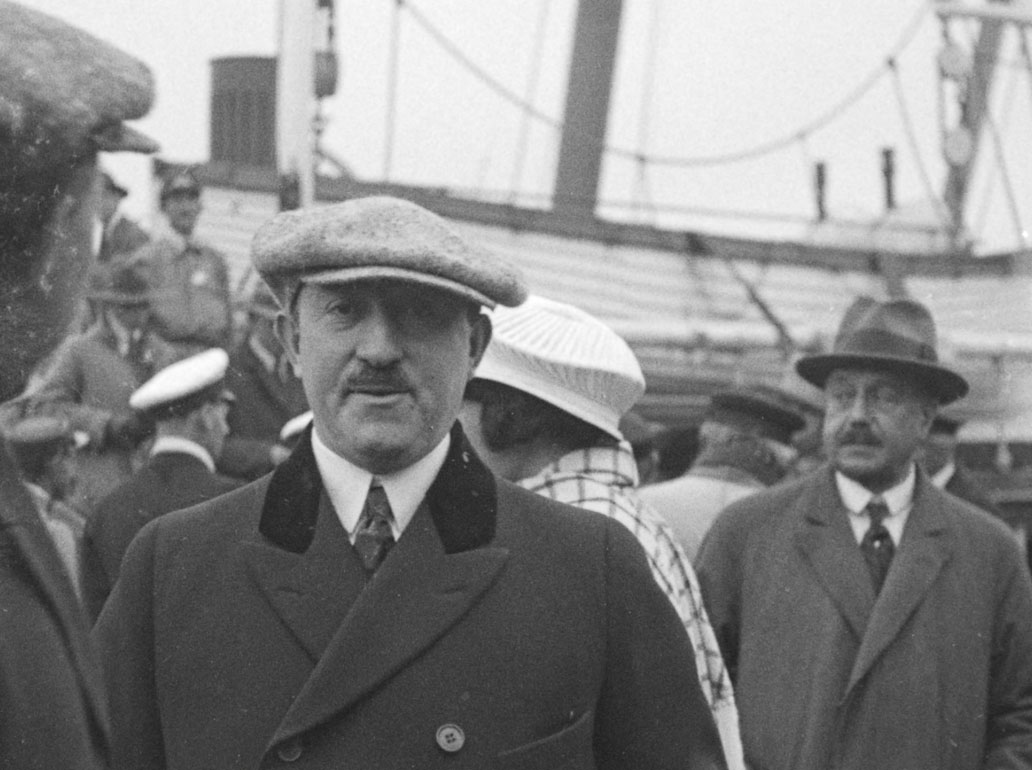2024 Federal Grant Winners
-
 Phil Ochs and the Swedish Ambassador to Chile (1974) will be preserved by American Song Archives.
Phil Ochs and the Swedish Ambassador to Chile (1974) will be preserved by American Song Archives. - A.J. Wardrep Collection (1930s–40s), home movies by a Tennessee Valley Authority engineer and Marine (Knox County Public Library).
- Andy Kelly: Local Store Owner (1971), interview with the proprietor of the first locally owned and operated grocery store in the Yukon Delta region (Alaska Moving Image Preservation Association).
- All-Star Baseball Meets at Grant Park (1939), footage of an inter-state Filipino migrant league baseball championship (Filipino American Historical Society of Chicago).
- Back Alley Rip-Off (1970), narrative following two men trying to protect their lottery winnings, made by Chicago artist Don McIlvaine (Chicago Film Archives).
- Basic Film Terms: A Visual Dictionary (1970), instructional film by Sheldan Renan illustrating basic filmmaking techniques (Yale Film Archive).
- Basic Television Terms: A Video Dictionary (1977), instructional film by Sheldan Renan illustrating basic television production techniques (Yale Film Archive).
- The Big Cats and How They Came to Be (1976), Polish-American documentary on feline evolution made for the National Zoological Park (Smithsonian Libraries and Archives).
- Boys and Calves (1940), portraits of young farmers with their livestock, designed to encourage cattle husbandry (Knox County Public Library).
- Calumet Park (1939), home movies by Nicholas Viernes of Filipino Americans engaged in leisure activities in and around Chicago (Filipino American Historical Society of Chicago).
- Camping Among the Indians (1927), documentary on a variety of dances performed by Native Americans in the southwest, filmed by AMNH curator Clyde Fisher and author Ernest Thompson Seton (American Museum of Natural History).
- Census: Accounting for the Nation (1974), animated film by Karen Loveland depicting the history of the United States census (Smithsonian Libraries and Archives).
-
 With NFPF support the Smithsonian Libraries and Archives will preserve nine educational films from Smithsonian staff filmmaker Karen Loveland, one of the most prolific American woman filmmakers of the 20th century.
With NFPF support the Smithsonian Libraries and Archives will preserve nine educational films from Smithsonian staff filmmaker Karen Loveland, one of the most prolific American woman filmmakers of the 20th century. - Charlie Wertman Collection (1935–40), home movies by a Marine Corps radio operator stationed in China (Pan Am Historical Foundation).
- Chicago of Today (1936), an architectural survey of downtown Chicago by Nicholas Viernes (Filipino American Historical Society of Chicago).
- Christmas Day Aviation Meet at Tanforan (1912), footage of an automobile-airplane race with pilot Lincoln Beachey, filmed by the Miles Brothers, owners of the first west coast film studio (Niles Essanay Silent Film Museum).
- City of the Dead (1978), educational film made for the Smithsonian National Museum of Natural History (Smithsonian Libraries and Archives).
- Colliding Worlds (1980), Orie Medicinebull’s documentary on four generations of women from the Mono people of central California (Madera County Library).
- Construction of the Fulton National Bank (1953–55), footage of one of downtown Atlanta’s most prominent buildings (Atlanta History Center).
- Construction of Golden Hill Methodist Church (1925–28), documentation of the birth of a Bridgeport, CT landmark (Bridgeport History Center).
- Council Meeting: Public Officials Visit Villages (1971), documentation of state officials attending the Emmonak Tribal Council in western Alaska (Alaska Moving Image Preservation Association).
- Cranbrook Educational Community Collection (late 1930s–early 1960s), footage of the renowned campus and its buildings designed by modernist architect Eliel Saarinen (Cranbrook Educational Community).
- Dalip Singh Saund Collection (ca.1956–62), constituent reports and campaign films from the first Indian American and first person of Asian descent elected to the US congress (University of California Santa Barbara).
- Dancing Flowers (ca.1941–46), homemade stop-motion animation by John Nash Ott, featuring dancing potted plants (Chicago Film Archives).
- Delaware Valley College vs. King’s College Football Game (1960), footage of a pivotal victory that sparked the expansion of DelVal’s athletics program (Delaware Valley University).
- Didn't We Ramble On (1989), documentary by Billy Jackson with narration by Dizzy Gillespie, tracing the lineage of traditional African drumming to African American marching bands (Pittsburgh Sound + Image).
- Do It the Hard Way: Rube Goldberg and Modern Times (1970), celebration of the cartoonist/inventor made by Karen Loveland for an exhibition at the Smithsonian Museum of History and Technology (Smithsonian Libraries and Archives).
- Dreams of Passion (1989), dreamlike dance film that depicts Black lesbian desire by Aarin Burch (University of Chicago).
- Easy Street (1979), educational film by Jacqueline Shearer to encourage Black and Latino high school students to pursue careers in healthcare (Washington University in St. Louis).
- Elijah Pierce: Woodcarver (1974), profile of the renowned self-taught African American folk artist (Ohio State University).
- Fisherman’s Co-Op Meeting (ca.1972), documentation of the Yukon Delta Fish Marketing Cooperative, owned and operated by the Yup’ik people (Alaska Moving Image Preservation Association).
- Founding a New Life (1920–38), documentation of the Jewish Joint Distribution Committee charity work in Russia and Ukraine (American Jewish Joint Distribution Committee).
- Games for Married Men (1977), dark comedy about midwestern middle class life produced by amateur filmmaking group Central Cinematographers (Chicago Film Archives).
- Ghosts (1972), Beryl Sokoloff’s macabre experimental film (Phoenix Arts Alliance).
-
 This congressional report from the Dalip Singh Saund Collection (ca.1956–62) will be preserved by the University of California Santa Barbara with NFPF support.
This congressional report from the Dalip Singh Saund Collection (ca.1956–62) will be preserved by the University of California Santa Barbara with NFPF support. - Gilgamesh (1978), animated survey of one of humanity’s great narrative stories, made for the Smithsonian National Museum of Natural History (Smithsonian Libraries and Archives).
- Helen Frankenthaler and Ruth Fine Discussion (1993), footage of a gallery tour and discussion between the artist and curator as well as an opening gala for the 1993 exhibition “Helen Frankenthaler: Prints” (National Gallery of Art).
- It Happened in the Kitchen (1941), industrial film sponsored by the Modern Kitchen Bureau and produced by Cinecraft Productions (Hagley Museum).
- Lavoslav Schwarz Rest Home (1967), documentation of the Jewish Joint Distribution Committee charity efforts at a home for the aged in Zagreb, Croatia (American Jewish Joint Distribution Committee).
- Letters Not About Love (1998), experimental documentary by Jaquline Ochs about the exchange of letters between poets Lyn Hejinian and Arkadii Dragomoshchenko (New York University).
- Little Farmers of Reynoldsburg (1936) and Reynoldsburg Pt. 2 (1937), home movies by Nicholas Viernes of an interracial Filipino American family’s life on a farm in rural Ohio (Filipino American Historical Society of Chicago).
- Mirror of Kings: Tales from Kalila Wa Dimma (1982), adaptation by Karen Loveland of the ancient Middle Eastern book of fables, narrated by Omar Sharif (Smithsonian Libraries and Archives).
- A Musical Mixup (ca.1928), silent comedy produced by the Weiss Brothers starring Jimmy Aubrey and Bud Duncan (Chicago Film Society).
- Muzak (ca.1972), documentary by Rhody Streeter and Tony Ganz about the background music company (New York Public Library).
- The National Agricultural College (1953–54), portrait of campus life during the rapid expansion of what would become Delaware Valley University (Delaware Valley University).
- New York (1965), abstract expressionist collage by Beryl Sokoloff (Phoenix Arts Alliance).
- Obey Your Air Raid Warden (1942), humorous parody of a popular song and public service announcement made in response to World War II (Chicago Film Archives).
- One Clear Call (1922), silent melodrama directed by John Stahl, starring Milton Sills and Henry B. Walthall (George Eastman Museum).
- Passover in Vienna (1947), footage of a celebration for Holocaust Survivors at an Austrian transit center (American Jewish Joint Distribution Committee).
- Phil Ochs and the Swedish Ambassador to Chile (1974), dialogue between singer/songwriter Phil Ochs and diplomat Harald Edelstam about conditions in Chile following the 1973 coup d’état (American Song Archives).
- Priya Ramrahka Collection (1960s), travel films from Africa by Priya Ramrakha, a photojournalist forTime and Life magazines (National Museum of African Art, Smithsonian Institution).
- Share the Care (1941), public service announcement to dissuade littering produced by the Chicago Park District (Chicago Film Society).
- Sheep in the Clarksville Trade Area (1939), sponsored film for rural audiences on the benefits of sheep cultivation (Knox County Public Library).
- Simpson Street (1977), documentary by William Sarokin depicting the deterioration of a once promising neighborhood in the South Bronx (New York Public Library).
- Southwest Indians (1932), Native American dances filmed by AMNH curator Clyde Fisher (American Museum of Natural History).
- Spin Cycle (1991), autobiographical rumination on filmmaking and romantic relationships by Aarin Burch (University of Chicago).
-
 The elusive and powerful founder of the Fox Film Corporation is documented in William Fox Newsreel Outtakes (1920s), to be preserved by the University of South Carolina with NFPF support.
The elusive and powerful founder of the Fox Film Corporation is documented in William Fox Newsreel Outtakes (1920s), to be preserved by the University of South Carolina with NFPF support. - The Switch (1961), mischievous domestic comedy directed by Margaret Conneely and produced by Chicago’s Metro Movie Club (Chicago Film Archives).
- Thomas Edison and His Amazing Invention Factories (1979), educational film made for the Smithsonian Museum of History & Technology (Smithsonian Libraries and Archives).
- Tocatta for Coy Contracts (1968), irreverent, inside-joke film made by Smithsonian employees for Charles Eames (Smithsonian Libraries and Archives).
- Tower Dance (1988), Beryl Sokoloff’s playful depiction of the World Trade Center (Phoenix Arts Alliance).
- The Unemployment Test (1979), educational film by Jacqueline Shearer to provide information and dispel myths about unemployment benefits (Washington University in St. Louis).
- Varnette’s World: A Study of a Young Artist (1979), documentary by Carol Parrott Blue on the influential African American artist Varnette Honeywood (National Museum of African American History and Culture, Smithsonian Institution).
- We Are Universal (1971), documentary by Billy Jackson about African American arts and culture inspired by the “Black is Beautiful” movement (Pittsburgh Sound + Image).
- William Fox Newsreel Outtakes (1920s), collection of newsreel outtakes documenting the personal and professional activities of William Fox, founder of the Fox Film Corporation (University of South Carolina).
- Witch (1973), educational film by Karen Loveland made for the Museum of Witchcraft and Magic (Smithsonian Libraries and Archives).
